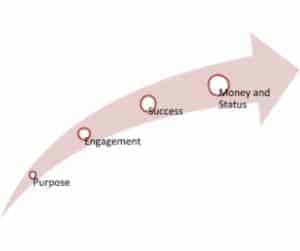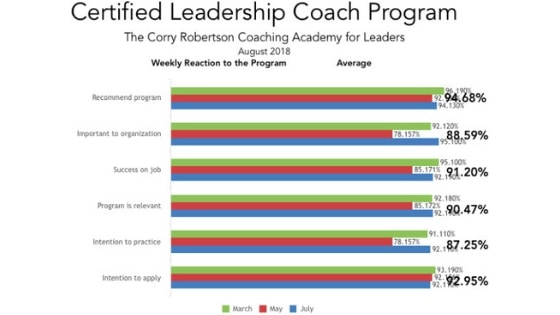Why do you need to think about Future Proof Leadership?
According to Gallup, 84% of Canadian workers are either not engaged or actively disengaged.
The Business Development Bank of Canada is warning that Canada is experiencing a labour shortage that will likely last a decade.
Companies that can’t attract a workforce or engage employees will face stagnation or demise.
Leaders need to know how to build a workplace culture that will set their companies apart as an employer of choice. This report will reveal how.
Part 1: Employee Engagement Not an Issue for You? Think again.
“What is your focus for today’s call?” I asked David my client of several weeks. David is an employee in the accounting department of a printing company employing almost 200 people. I was hired to coach several members of this organization, some of whom were HIPOs which is short for high potential employees. Then there were the employees like David. David was in the group that was on individual performance improvement plans.
To my opening question, he responded: “I don’t know. I haven’t given it any thought. Sorry.” The ‘sorry’ did not sound apologetic at all, but dismissive.
“What would make this conversation a really productive use of your time?” I asked
“I don’t know. What would you suggest?” David replied as though lobbing the ball back into my court.
Not a coach to allow my clients to get me to do their work for them I reminded David that: “A coaching conversation isn’t about me telling you what you should focus on. My job is to help you figure out where you want to go and how you want to get there.” Then I tried again “If you could walk away with one golden nugget to make this a productive call for you, what would that look like to you?”
“I really don’t know.” David’s short tone and lack of energy said more than his actual words.
Giving an inch I asked: “How does this sound? Would it be helpful if you talk me through how you are doing with a goal from your performance plan?” There was a long silence on the line as I gave David the time he needed to gather his thoughts and formulate his response.
 “This conversation is confidential right?” his voice was slow and heavy.
“This conversation is confidential right?” his voice was slow and heavy.
“Yes it is.” I assured.
“I am just not interested in coming in here every day and be expected to work my butt off so Mr. Big Boss Man up there can get rich. Why should he pull up in a Lexus when I drive a beat up old Ford? Sorry but it makes me feel sick. I come in at 9 to do my job until 5, get paid and go home. No more. No less. That’s it, that’s all. You may think I’m a jerk but that’s just how I am. Sorry.”
This conversation, fictionalized enough to maintain the privacy of all involved, is important because it demonstrates the symptoms known as ‘quit but stayed’. David is a chronic under-performer who, while physically present at work, is contributing the bare minimum of effort to avoid being let go. He is disengaged and he is not a rare breed in Canada. Actually, he is just like most Canadian employees.
If you are thinking “if any of my employees are like David, then I am happy to show them the door” you are not alone. I have heard that opinion from many business owners. Letting employees go with the expectation that someone better will fill their seat is no longer realistic.
The Business Development Bank of Canada is advising that “Canada’s small and mid-sized companies find ways to adapt to a “new normal” of worker shortages that will likely persist for a decade” Pierre Cleroux, Chief Economist for the Business Development Bank of Canada.
Mr. Cleroux says that “A lot of people think this is only temporary, unfortunately this is not the case and it’s important to understand that, because they have to change the way they manage their human resources.”
And he urges a new mindset for company leaders:
“If you think this is temporary, you will take temporary measures — which is the wrong way to approach this issue.”
Letting the under-performers go is a temporary measure that will lead to long-term consequences. Every business depends on recruiting and retaining top talent if it’s going to thrive and grow because no matter how great the product or service is, if the company does not have the workforce it needs to fill orders, serve clients, and sustain growth the great company will stagnate, whither or worse.
Building a culture that leads to employee engagement is a long-term solution. You may think that employees like David are few and far between at your company. If that is so, you would be one of the rare employers in Canada with a well-engaged workforce.
Through its research, Gallup confirms that workers like David are the norm and not the exception.
Gallup found that 87 percent of workers worldwide are either not engaged or actively disengaged (70 percent in the US, 83 percent in the U.K. and 84 percent in Canada).
Engagement is the result companies achieve when they stimulate employee’s enthusiasm for their work and direct it towards organizational success. (The Hay Group)
There are three zones of engagement that leaders must be able to identify:
- Engaged employees feel connected to their work, colleagues, and the company’s leaders. Their energy is positive and inspires everyone in their wake. The engaged do everything in their power to propel the organization towards growth and success. They are your HIPO’s.
- Disengaged employees have ‘quit and stayed.’ They put in the time, but no discretionary effort, energy or enthusiasm. They do the minimum they need to do to avoid being let go, but nothing more. This level of disengagement can be hard to spot because these employees are like sleepwalkers who appear to be awake but their spirits are sound asleep. Managers can’t call them out on bad behaviour because they are not overtly breaking rules or screwing up.
- Actively disengaged employees are chronically unhappy and frustrated at work. We say ‘actively’ disengaged because they are active in negative ways. These are the ones who undermine, intentionally or not, the progress of others and drag down the entire workplace atmosphere to their level. It becomes easy for others who are disengaged to be negatively influenced by these folks, and difficult for the engaged workers to constantly compensate for their underperformance and toxic energy. The damage they do to an organization is more insidious because you can’t really put your finger on the problem or its source so it is hard to correct. Like an invisible, odorless toxic substance that slowly seeps its way into the from person to person, rendering themselves and those around them to be burdens to the organization. They do as much damage as would a flu epidemic that sent everyone home to bed for an indefinite period of time.
I have never met a business owner who did not expect employees to be engaged, who was not baffled by the attitude of the disengaged and resentful of the actively disengaged. My vantage point as the coach allows me to see that the boss blames the disengaged and the disengaged, like David, blame the boss.
Where does the journey to improved employee engagement begin? The first step is to ask yourself some powerful questions:
 -How many of my employees are driving my company forward?”
-How many of my employees are driving my company forward?”
-How many are a stagnant force?
-How many are harming my business through active disengagement?”
-What am I going to do to correct this situation?
Part 2: Why Work Is Not Working
As discussed in part 1, Canadian employers are facing a labour shortage and Gallup found that 87 percent of workers worldwide are either not engaged or actively disengaged (70 percent in the US, 83 percent in the U.K. and 84 percent in Canada).
The good news is that improving the employee engagement statistics at your company will not involve money. Really. Put your cheque book away because raises, bonuses, privileges and material incentives will not improve employee engagement.
This solution will however require that you do some soul searching, some communicating and maybe even make some personal and organizational changes. One major reason why work is not working is because many of those disengaged Canadians could lack a sense of purpose.
Like Aaron Hurst said, The Purpose Economy, you will not find your purpose by meditating on a mountain top!
 Your purpose is the reason why you do something yet many have bought into the belief that ‘purpose’ means a quest to satisfy an insatiable hunger for money and status. Common logic dictates that workers are intrinsically driven to achieve a high level of income and status that, once achieved make them feel successful. Then, that feeling of success will fuel higher and higher levels of engagement. In service to this notion, employers have generously allocated massive incentives that include raises, bonus, prizes, gorgeous offices, expensive privileges and promotions that come with impressive titles. Most employers have noticed that the positive effect that these have on engagement is short lived. Rewarding with money and status actually buys into the perpetual downward spiral of disengagement, underperformance or worse, and even failing companies.
Your purpose is the reason why you do something yet many have bought into the belief that ‘purpose’ means a quest to satisfy an insatiable hunger for money and status. Common logic dictates that workers are intrinsically driven to achieve a high level of income and status that, once achieved make them feel successful. Then, that feeling of success will fuel higher and higher levels of engagement. In service to this notion, employers have generously allocated massive incentives that include raises, bonus, prizes, gorgeous offices, expensive privileges and promotions that come with impressive titles. Most employers have noticed that the positive effect that these have on engagement is short lived. Rewarding with money and status actually buys into the perpetual downward spiral of disengagement, underperformance or worse, and even failing companies.
To quiet the demands for more money, better benefits or improved working conditions you must deliver on the following requirements:
- Fair pay and reasonable benefits according to industry and geographical standards.
- Fair, safe and reasonably comfortable working conditions that respect the physical, emotional and mental health of the entire workforce.
Once the employees know that those criteria are securely in place, the demands for more money and better conditions come off the table but these do not establish a sense of purpose and they do not ignite engagement.
If money and status don’t ignite a sense of purpose, what does?
- To feel a positive sense of connection to each other throughout the ranks.
- To know their work contributes to the goals or the organization.
- To be a part of the greater good that their company is in service to.
- To feel challenged, to be learning, to be growing, to be getting better, smarter, and/or stronger.
In turn, this satisfied sense of purpose leads to engagement which leads to business success which leads to money and status. The exquisite beauty of this concept is that there are no losers. Everyone benefits which means compound gain for employees and employers alike!
Leaders, lead the way!
Is it worth it to you to embark on the journey of igniting engagement or should you accept the principle that most of the success of your company is driven by a mere handful of people? Other research reported from Gallup may help you decide. Organizations with high employee engagement experience:
- 48 percent fewer staff safety incidents
- 37 percent lower absenteeism
- 28 percent less theft (employees stealing from the company)
- 25 percent to 65 percent lower turnover
- 22 percent higher profitability
- 21 percent higher productivity
- 10 percent higher customer engagement
The benefits of high engagement have been reported for several years. For example, research published by Blessing White in 2011 revealed that high engagement companies had total shareholder returns that were 19% higher than average while the low engagement firms fell 44% below average. That is a difference of 63%. (The 2011 Employee Engagement Report published by Blessing White Inc., Princeton NJ)
Business leaders can sometimes overlook the possibility that the level of employee engagement reflects their own and that employees already have that sense of purpose as outlined above.
Here are some executive coaching questions to help you figure out whether or not they do.
Level One
- Why does your company exist?
- What need does the company serve in society?
- What kind of a workforce do you need to achieve your company’s purpose?
- Does every member of your workforce understand why their job is important?
Level Two
- Do you know how the members of your workforce would answer those questions?
- Are their responses in alignment with yours?
Level Three
- Who do you need to be as a person to lead that workforce?
- What attitudes, behaviours and words do you need to use to be that leader?
Part 3: The Hornet Nest and Change Leadership
 As with all of the stories that I share, I fictionalize them enough to conceal the identities of the companies, leaders and their employees. Here is one of those stories.
As with all of the stories that I share, I fictionalize them enough to conceal the identities of the companies, leaders and their employees. Here is one of those stories.
Jack described his not-for-profit organization to me with pride. He had been at that branch for a year and had come to know the employees as well educated, dedicated people. Despite this, a debilitating problem undermined the workplace. The employees could not do their jobs effectively and so their cause was negatively affected.
“Corry, there are days when there are so many complaints coming through my office that I swear, I don’t get any work done!” Jack said, then he went on, parroting some common things he hears “Jack! You have to do something about her! I can’t work like this!” and “Jack, got a minute? I have to talk to you about what he just said to me!” His voice revealing that after only a year in his role, he was totally fed up.
Jack’s assessment was that many years of misunderstandings, day to day conflict, and personality clashes had accumulated to the point where people disliked and distrusted each other so much that they now refused to collaborate, even with their own team members.
This is how the hornet nest grows.
Those familiar with the terrain develop a subconscious knowledge of where the danger lurks. It’s not always something that can directly be pointed out, just an instinct for whom to avoid, where to tread lightly. There’s an ever-present hum to which many have turned a deaf ear. The constant buzzing is ignored with the hope that it will eventually go away on its own. Yet the nest grows, it is always ready to swarm and always does when it is disturbed.
Jack and I designed a series of coaching workshops to bring everyone together on a regular basis so that they could co-create a better culture of their own making.
From the beginning of the mandate resistance was strong, especially from the most frequent complainers. I fielded complaints from the participants about the ice breaker activities, the dialogue exercises, and the workshop format.
“I’m sorry Corry” Jack said to me the morning after the third workshop and yet another round of complaints from the usual suspects. “I have to pull the plug on this project. I can’t force them to participate and they are refusing to come back. If I don’t have all of them in the room, then it defeats the purpose of co-creating a better culture.” He looked at me, his anger and frustration now at a tipping point “but believe me, no more Mr. Nice Guy. I tried the nice way and it didn’t work. Now I lay down the law and they are not going to like it. They are going to grow up or get out.”
 As the weeks have passed after that conversation, I reflected on the program to figure out if we could have done things differently to complete the project with the desired outcome.
As the weeks have passed after that conversation, I reflected on the program to figure out if we could have done things differently to complete the project with the desired outcome.
What I came to understand was that their nest was threatened. Jack and I were asking people to take part in building something better which meant they had to let go of a past that they were passionate about despising. They would have had to let go of hurts and angers that had become a part of their very identity. By letting go of their way of being, they in some way, were betraying something that was true for them.
One of the hardest things for change leaders like Jack is to endure what inevitably feels like being attacked by a storm of angry and unrelenting hornets whose nest is being attacked. Here are a few paradoxical truths that change leaders must be aware of.
- People want to be heard, but not feel vulnerable.
- People want their situation to improve, but they resist change.
- People want help, but can feel threatened by it.
- People want to be understood, but don’t always trust others with their truth.
- People will listen, but often only hear what they already believe.
- People can fight so hard to resist change that they harm themselves in the process.
I commend Jack and all the leaders like him who take on the nest. I honour the people who are suffering but afraid to change. Leaders must approach change with confidence and purpose, undaunted by the fear of upsetting the hornet nest. They must stay the course until the inevitable fury has calmed, which it will.
Part 4: The Path to Performance and the Case for Coaching Culture
Have you ever met a business leader who did not want their company to achieve its full potential? One thing that most companies have in common is that leaders want to maximize performance. Another thing that many companies share is low employee engagement.
The Problem
Already presented in this series, these stats are worthy of repetition. There is a labour shortage in Canada which demands that leaders do more to attract and retain talent. Through its research, Gallup found that 87 percent of workers worldwide and 84 percent of employees in Canada (70 percent in the US, 83 percent in the U.K.) are either not engaged or actively disengaged. That means only 16 percent of Canadian workers are driving their organizations forward.
Why is there such a ravine between what leaders are trying to achieve and how the workforce is responding?
First things first, salaries and benefits must be fair and work conditions must be safe and conducive to productivity. Once those two things are indisputable facts at your company, then you move on to engagement.
Part of that lack of engagement is due to poor leadership. You may have heard the saying that people don’t leave their companies or even their jobs. They leave their managers. It is important to realize that most people disengage from their work long before they leave the company.
• Up to 40% of a company’s performance is negatively impacted by a poor leader.
• Poor leadership can cost 7% of annual revenue.
• That’s over a million dollars a year for any organization with $15 million dollars in annual sales. (Ken Blanchard)
The Solution
Building a coaching culture is the solution for leading an engaged and performing workforce because culture is at the very root of an organization’s ability to thrive.
The notion that a healthy company culture is essential to organizational success is not new. For example, Peter Drucker, who invented ‘management by objectives’ and has been described as the founder of modern management, is also noteworthy for his belief that “culture eats strategy for breakfast”.
More recently, author and management consultant, Pat Lencioni, states in his book, The Advantage, that there are two requirements for business success:
• Be Smart: about strategy, marketing, finance and technology
• Be Healthy: minimal politics, minimal confusion, high morale, high productivity, low turnover (The Advantage)
Most business leaders are smart enough to be successful, but what most lack is knowledge about cultural health. Lencioni explains that organizational health is about making a company function effectively by building a cohesive leadership team.
“Culture is the way in which we get work done, but often times there is dysfunction inhibiting success,” -Lencioni
How do we do it?
How do we build that healthy, engaged culture? Good question, and here is my solution. Build a coaching culture:
• Coaching is a process that inspires people to maximize their personal and professional potential.
• A coaching culture is where leaders embrace coaching as a management style throughout the organization.
Put another way, coaching is applied leadership theory so the case for building a coaching culture to unlock potential and activate performance is compelling.
With the permission of The International Coach Federation and The Human Capital Institute, I am now going to share some findings from their 2016 research report, entitled, Building a Coaching Culture with Managers and Leaders.
Coaching Culture Defined
Let’s first take a look at how a coaching culture is defined in the research.
• Employees value coaching
• Senior executives value coaching
• Leaders spend more time on coaching activities than industry peers
• Leaders have received accredited coach-specific training
• Coaching is a line item in the budget
• All employees have an equal opportunity to receive coaching from a professional coach
The Impact of Coaching
• 57% reported that coaching improved team function
• 56% reported increased engagement
• 51% reported increased productivity
• 45% reported improved employee relations
• 36% reported improved leadership development
Coaching Culture Outcome
A strong coaching culture is correlated with higher engagement and stronger financial performance. In a strong coaching culture, 62 percent of employees rated themselves as highly engaged while in other cultures only 50 percent rated themselves as such.
Answering the question “How would you describe your organizations revenue growth in 2015 in relation to your industry’s peer group, those with a strong coaching culture reported that they are 51 percent above their peers. 47 percent said they are on par with their peers and 2 percent said they are below their peers.
From my own research, managers using coaching as a leadership style report overwhelmingly that it is important and relevant to their personal success and that of the organization so they intend to use it for themselves and to recommend it to colleagues.
How to do it.
64 percent of strong coaching cultures use a mix of these three modalities:
• External Coach Practitioner: a professional coach in private practice who is hired by the firm on a contract basis
• Internal Coach Practitioner: a professional coach who is employed by the firm and has specific coach
responsibility defined in the job description.
• Leaders use coaching skills as a management style: Leaders have received accredited coach training and
use the coach approach as a leadership style.
The secret to leading a high performing and engaged workforce is not hidden deep in the woods. Coaching culture is the bridge for leaders to cross if they want to transform their organizations’ potential and achieve high performance.
The statistics are used with the permission of the report’s author, Jenna N. Filipkowski Ph.D.
Part 5: The Portal to Success
The Mastermind
The concept of “the mastermind alliance” was formally introduced by Napoleon Hill in his timeless classic, “Think and Grow Rich” published in 1937. He described a mastermind group as:
 “A friendly alliance with one or more persons who will encourage each other to follow through with both plan and purpose.”
“A friendly alliance with one or more persons who will encourage each other to follow through with both plan and purpose.”
Hill firmly believed that belonging to such a group was a way of taking your personal and professional life to the next level. Although Hill popularized the concept, many believe he drew his inspiration from his mentor, Andrew Carnegie. Carnegie was the founder of a Chicago group of business people known as the Big 6. The members included William Wrigley Jr. of Wrigley’s chewing gum, as well as John D. Hertz and William Ritchie, who owned The Yellow Cab Company.
Going back even further in time, Benjamin Franklin formed a club for mutual improvement called Junto in 1727. Franklin brought this group of friends together to provide a structured form of mutual improvement. The members were drawn from diverse occupations and backgrounds, but they all shared a spirit of inquiry and a desire to improve themselves and their community.
Executive Coaching
Executive coaching is a powerful approach to self-improvement that is both art and science. A masterful coach forms a partnership with her clients to create a unique space for discussions that involves active listening, thorough inquiry and honest feedback.
Clients are guided through a self-discovery process that helps them to gain access to their greatest potential for transformation, sustainable personal growth and accelerated achievement. This same approach and its extraordinary results are then integrated into workplace performance with renewed leadership.
Research conducted by The International Coach Federation and the Human Capital Institute in 2016 determined that coaching leads to improved team functioning, increased engagement, greater productivity, improved employee relations, and faster leadership development. The same report indicates that coaching also helps to improve the financial performance of companies.
The Executive Suite Mastermind
This unique club takes the President’s Roundtable to a whole new level to help you to accelerate your company’s achievements and success. It’s a catalyst like no other!
The Executive Suite Mastermind incorporates the best of executive coaching and mastermind strategies that I’ve honed over the past many years.
Each roundtable group consists of a small group of executives who meet up to 12 times annually within three distinct meeting formats.
To support self-discovery, the first format is for all new members. They are invited to complete the Lumina Spark Psychometric Assessment and to attend a group debriefing session. This session will show you how to interpret your report and gain interesting insights about your character strengths and potential blind spots.
The second format brings the small group sets together 9 times per year. A professional facilitator guides the conversation during these sessions through our uniquely structured process incorporating the best of mastermind and executive coaching strategies.
 Although this signature process is deceptively simple, it helps members to explore and leverage each other’s knowledge, wisdom, experience and strengths. The result? An unprecedented opportunity to tap into resources to accelerate high-level achievement.
Although this signature process is deceptively simple, it helps members to explore and leverage each other’s knowledge, wisdom, experience and strengths. The result? An unprecedented opportunity to tap into resources to accelerate high-level achievement.
The third meeting format is an open house event that takes place twice a year. This is where all of the club members are invited to take part in a high-level professional development and networking opportunity. These are the only two events of the year where non-members are invited to join us so that they can assess if this club is for them.
What makes us so powerful?
Our club brings together members from a broad spectrum of industries, company sizes and generations. We believe that today’s leaders want to invigorate their capacity for innovation in all realms of business management so we offer the space to cross-pollinate ideas with people who have much in common with you yet may also be quite different. The club offers the opportunity to look at situations from a fresh perspective but calling upon years of varied experience.
If you think a seat at this table is for you, please follow this link for access to more information www.CorryRobertson.com/retreats/ or book a consultation with me. See my real-time availability here and reserve time with me: www.TalkWithCorry.com











0 Comments